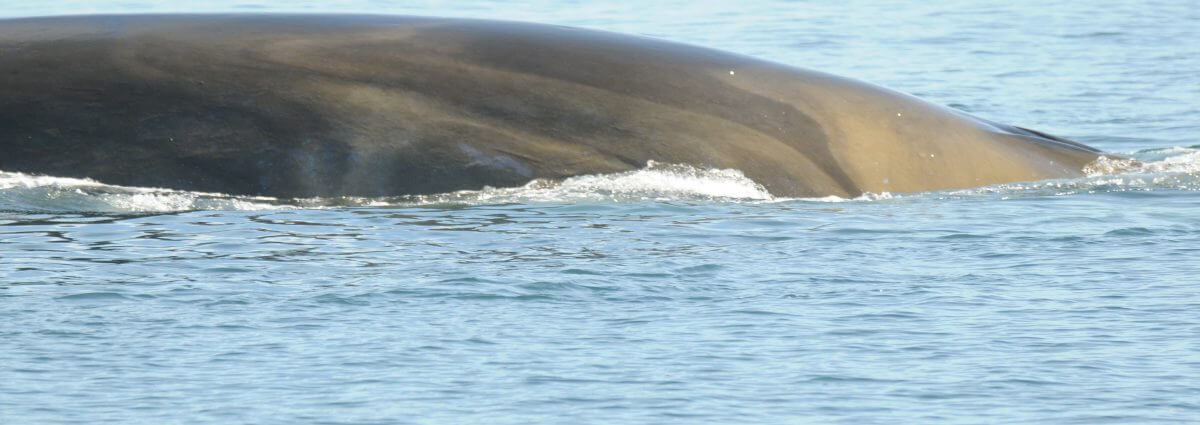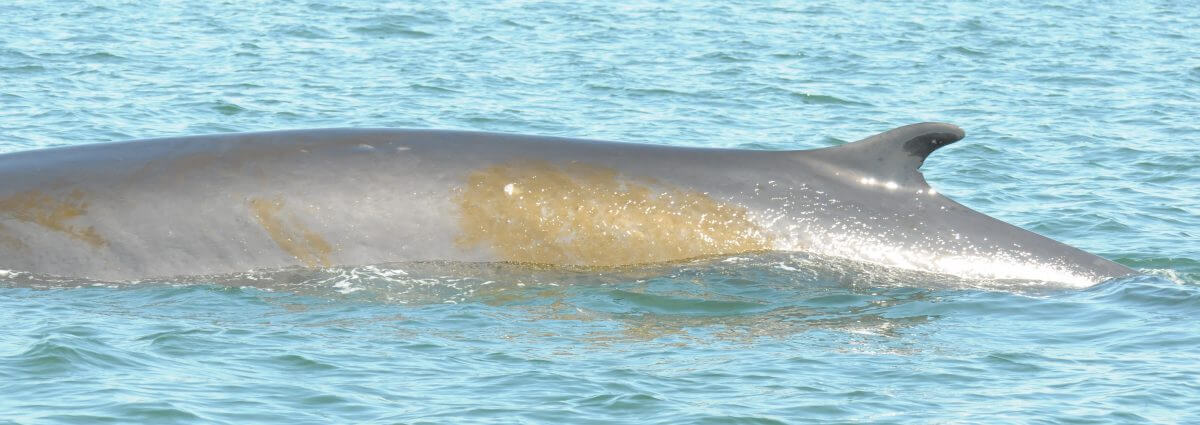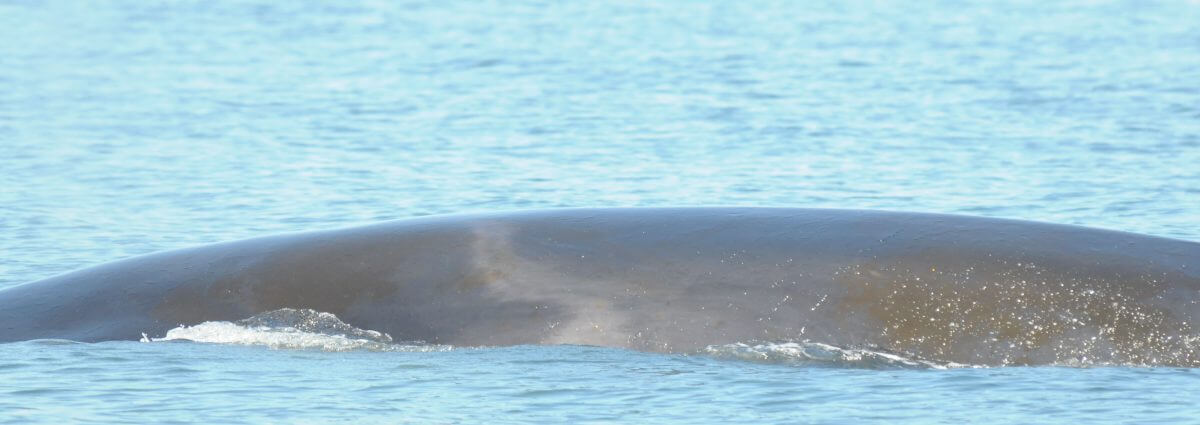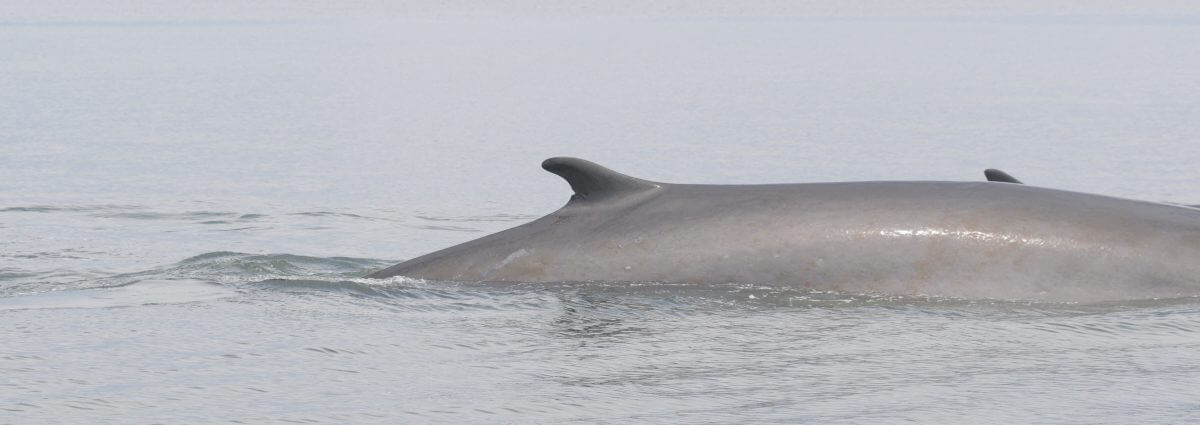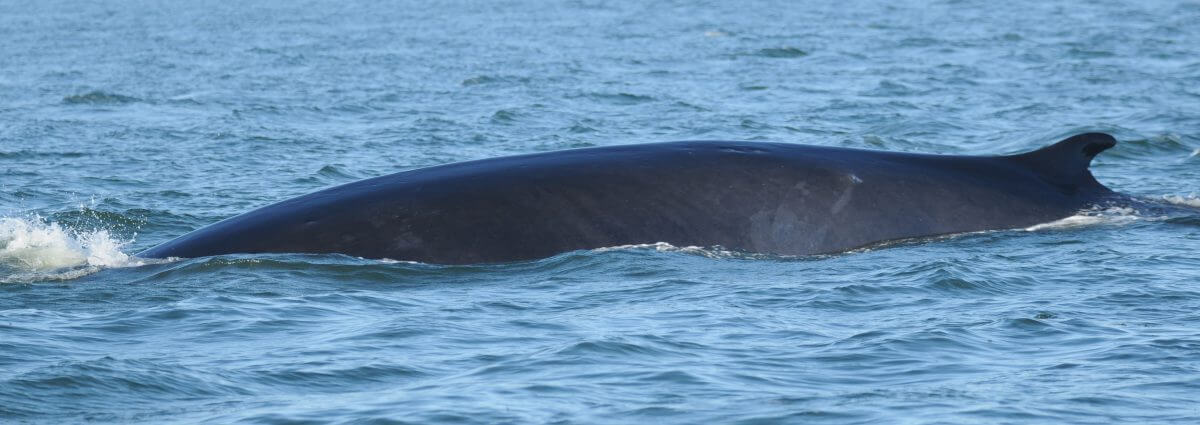U2
Fin Whale

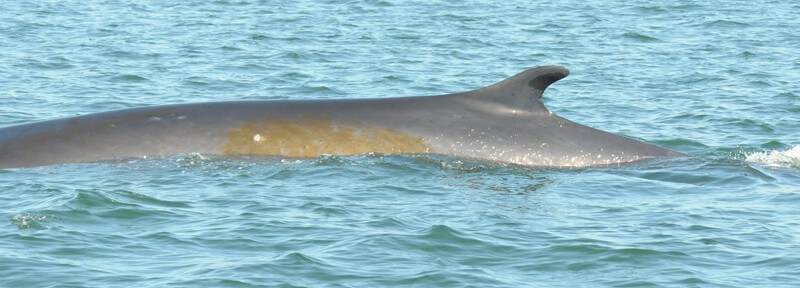
-
ID number
Bp011
-
Sex
Male
-
Year of birth
Unknown
-
Known Since
1984
Distinctive traits
U2 can be recognized by the shape of his dorsal fin and the small notch at its base. Only his left side makes him easily distinguishable, thanks to the white spot and two small depressions that appear there. His right side also has multiple scars.
But be careful! U2 has lookalikes: Bp039, Bp086, and Caïman.
Life history
A true elder in the estuary, this individual was photographed by Robert Michaud during his first summer in the field in 1984, even before the official formation of GREMM. He is the fin whale in the estuary that we have known the longest.
U2 is not only named after the famous Irish rock band: he is literally a star in the Saguenay–St. Lawrence Marine Park. In addition to being filmed with 11 other fin whales in August 1998, he appeared on the cover of the book Rencontre avec les baleines du Saint-Laurent (Encounter with the Whales of the St. Lawrence) and in the film La complainte du béluga (The Beluga’s Lament). However, it is his loyalty to the estuary that explains his fame.
On July 30, 1996, the GREMM team placed a radio transmitter on U2’s back, which allowed them to track his movements and dives for 17 hours. During the afternoon, he was very active and made dives to depths of 200 to 300 m. In the late afternoon and throughout the night, his activity decreased, and he made dives of less than 50 m deep.
These tracking efforts revealed three classes of activity: deep diving, intermediate diving, and shallow diving. Deep dives appear to be related to feeding, and intermediate dives to exploration. Shallow dives could be related to surface feeding or resting. This tracking is one of 25 carried out during a three-year project that has enabled GREMM to study the impact of boats on whales.
Observations history in the Estuary
Years in which the animal was not observed Years in which the animal was observed
Latest news from the publications Portrait de baleines
A true elder statesman, this fin whale! Photographed by Robert Michaud during his first summer in the field in the region in 1984, even before the official formation of GREMM, he is the fin whale of the estuary that we have known the longest. Faithful to the region, he has only been absent for one season, in 1986.
A sample of a few milligrams of skin was taken for genetic analysis to determine his sex: U2 is a male. U2 can be recognized by the shape of his dorsal fin and the small notch at its base. But be careful: U2 has lookalikes: Bp039 and Caïman. Only his left side makes him easy to distinguish, thanks to the white spot and two small depressions that appear there.
With high-quality photographs and careful analysis, it is also possible to distinguish between these lookalikes, thanks to the chevron pattern. The chevron pattern is an important term to know when it comes to fin whales! These are contrasting colored stripes, particularly prominent on the right side, which appear just behind the head of fin whales. Just like fingerprints, these markings are distinctive and unique to each individual.
Fin whales are asymmetrical! Their heads have several light-colored features on the right side that are dark on the left side: the lower jaw, the chevron, half of the tongue, and the front portion of the baleen plates. This feature may be useful in hunting strategies or for social cohesion.

